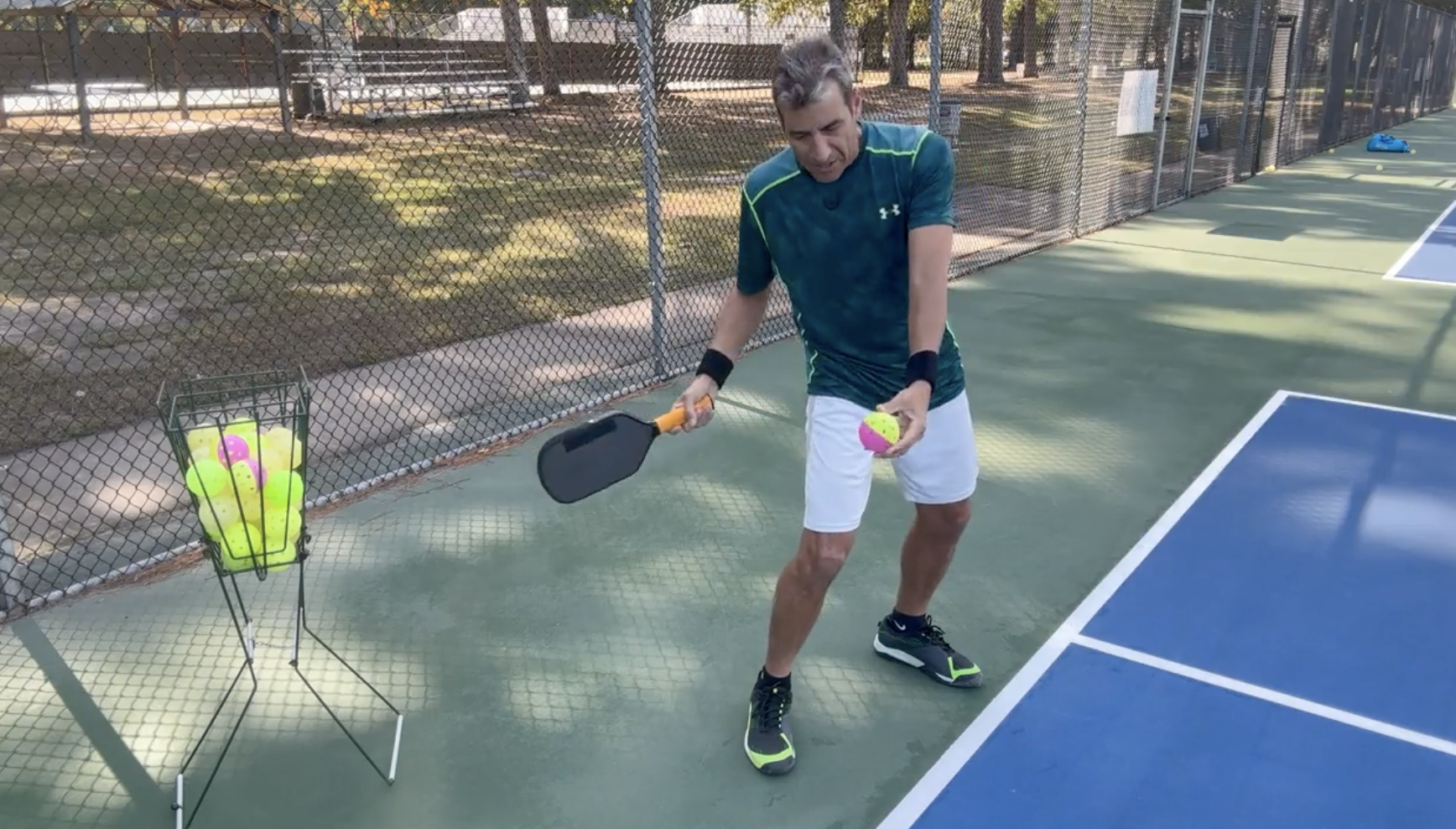Feb 26
/
Carlos Rodriguez
7 Pickleball Serve Drills: Use the Paddlespeed Technique and Strategy
The pickleball serve is unique because it's the only shot where you're not reacting to your opponent.
You aren't rushed, and you have the time to set your feet, take your time, and place the ball before contact exactly where you want it. Since you start the point, a strong serve can lead to a weaker return, giving you an advantage.
In the Paddlespeed online pickleball course, we cover seven pickleball serve drills to help you improve your power, spin, and accuracy while ensuring you're following the correct pickleball serve rules.
You’ll also learn how to apply our 4 main concepts to hit with more spin and power on your serve.
Pickleball Serve Mechanics and Technique
The serve starts with the toss. You control where you want to hit the ball, so the toss is critical.
And how you want to hit the ball determines your toss.
And how you want to hit the ball determines your toss.
We’ll be discussing two types of volley serves, as opposed to a drop serve in this article.
Volley Serve 1: The Flat Serve
A flat serve is a fast, low-spin serve that travels in a straight trajectory with minimal bounce, making it difficult for opponents to attack but requiring precise control.
A flat serve requires the toss to be more out in front of you and lat a comfortable height since you're driving through the ball.

Use this serve when you want a fast, low-bouncing shot to force a weak return, especially on hard, low-risk surfaces.
Here’s an example of flat serve from Ben Johns:
Volley Serve 2: The Heavy Topspin Serve
Use a heavy topspin serve when you want to create a ball that dips quickly and jumps off the return, making it harder to attack. Ideal for better margin over the net and adding spin-induced unpredictability.
For this serve, the toss should be a little further back and a little higher.This placement of the toss allows you to get more under the ball and generate topspin when you strike the ball.

Here’s an example of heavy topspin serve from Tyson McGuffin:
Serve Tip: Take Your Time with the Toss
When tossing the ball, take your time.
The preparation starts with your shoulders and works its way down to your legs, coiling your body as you load your weight onto your back foot.
The preparation starts with your shoulders and works its way down to your legs, coiling your body as you load your weight onto your back foot.
The serve should be one of the hardest and most powerful shots you hit because you have all the time to coil up and generate force.
The key to your best pickleball serve is controlling the toss. It needs to be precisely where you want it when you're ready to make contact.
Whether you're hitting a topspin or a flat serve, each situation demands different placement, power, and spin depending on environmental factors and your opponent's weaknesses.
Pickleball Serve Strategy
Whether you’re executing a drop serve or a flat serve, the goal of your serve is to control the start of each point.
Exploit Your Opponent
You can use the serve to exploit an opponent's weak spot, whether that's their forehand or backhand. By varying placement, spin, and speed, you keep your opponents guessing.
Choosing where to serve depends on both you and your opponent. Do they struggle with forehands or backhands? You can often tell by how they position themselves on the court.
In singles, a deep, powerful serve pushes your opponent back, giving you more court to work with on your third shot. In doubles, fast and varied serves have evolved as a key strategy, keeping your opponents on their toes.
Consider the Environment
Environmental factors also play a role—wind, for example, can affect the effectiveness of different types of serves. If the wind is in your face, a heavy topspin serve will slow down, so you will want to hit a flatter ball.
If the wind is at your back, you can hit with more topspin to bring the ball down while taking advantage of the extra power from the wind.
It's essential to vary your serve to keep your opponent guessing. You should aim to hit a mix of serves—topspin, flat, to the backhand, to the forehand—to prevent them from anticipating your next move.
Pickleball Serve Drills
To develop a your pickleball serve, we have seven drills from the Paddlespeed Program to help you improve every aspect of your serve—power, spin, and consistency:
Serve Drill #1: Rubber Arms
Write your awesome label here.
Serve Drill #2: Butt Slap
Write your awesome label here.
Serve Drill #3: Toss Elevator
Write your awesome label here.
Serve Drill #4: Net Clearance
Write your awesome label here.
Serve Drill #5: Power Trip
Write your awesome label here.
Serve Drill #6: Spin Cycle
Write your awesome label here.
Serve Drill #7: Over the Fence
Write your awesome label here.
Whether you’re focusing on power, spin, or control, these drills will help you develop a strong, strategic serve. By varying your serve style—such as using a flat serve or topspin—you'll keep opponents guessing.
Remember, your serve sets the tone for the entire point, so mastering how to serve in pickleball is a key skill for any player.
Copyright © Paddlespeed 2025
